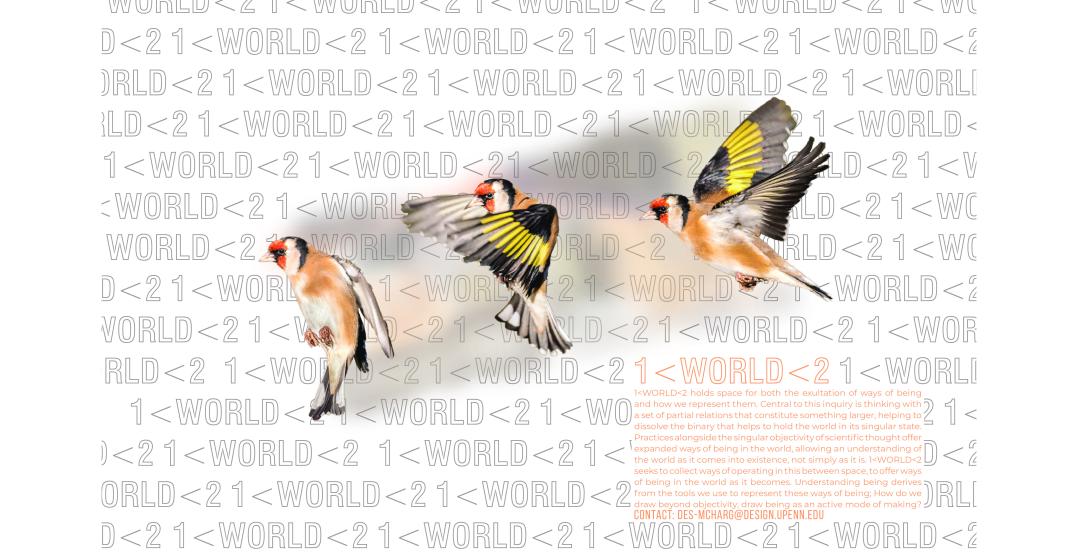Join our mailing list and receive invitations to our events and updates on our research in your inbox.
Open Call for Entries - 1<WORLD<2
Diagnostic. Optimizing. Words that characterize much of design literature. Either designers point out a problem or are excited about the latest technology that consumes/stores/reduces the carbon load. These two methodologies are often the impetus for speculative design, a practice which casts its lot in creating a singular world addressing one, or many, of the issues we are facing. Rather than focusing on speculative futures, 1<WORLD<2 asks how might we see the world differently, how might we draw the world differently, and how might we be in the world differently?
Central to this inquiry is thinking from within a set of partial relations that constitute something other than themselves, helping to dissolve the binaries that hold the world in its singular state. This ontological framing has been around for some time; Deleuze and Guattari call it the Rhizome, Haraway calls it the Cyborg, and Ali Shari’ati calls it the difference between Bashar (being) and Ensan (becoming). Marisol de la Cadena, through her work with the Quechua people of the Andes, unpacks the ways in which the continued practices and beliefs of Indigenous peoples create a world that is marked both by the singular objectivity of the enlightenment and an animated relation with the active world around, a world that is “more than one, but not quite two.” Practices alongside the objectivity of scientific Truth offer expanded ways of being that allow us to understand the world as it comes into existence, not simply as it is. 1<WORLD<2 seeks to collect ways of operating in this liminal space, to offer ways of being in the world as it becomes.
Being active in the continual making of the world is a difficult thought, perhaps due to a lack of practice thinking in these terms. If the world is no longer just a set of truths to discern, what epistemological framework accompanies but doesn’t replace the need for these truths? That is to ask: How do we live in the world-in-process again, alongside the knowledge our (Western) world has been developed out of static Truth?
Robin Kimmerer, in her work as an educator and director of the Center for Native Peoples and the Environment, actively works to combine “traditional ecological knowledge of indigenous people and scientific ecological knowledge.” Drawing from these two knowledge bodies, Kimmerer works on ecological restorations situated in both traditions, creating projects that craft new ways of relating to the land.
Understanding being derives from the tools we use to represent these ways of being. Tim Ingold, in Earth, Sky, Wind, and Weather traces the difficulty of children in drawing the earth as a distinctly spherical shape and as the space under the sky. Here, we see the importance of representational techniques in the ways we construct and understand the world. Karen Barad points to this with her concept of agential realism, which posits that the tools with which we construct our image of the world are in fact part of the phenomenon being observed; the world and its observation are inseparable. How do we draw beyond objectivity, draw being as an active mode of making? How might new ways of seeing be shown through new ways of drawing that do not depend on Haraway’s God Tricks,or the view of everything from nowhere?
1<WORLD<2 hopes to highlight practices and representations of worlds crafted from beliefs simultaneously and contradictorily held.
1<WORLD<2 is open to all students and early-career practitioners who wish to contribute to discourse surrounding ways of drawing and acting in the world-in-process.
Please send all inquiries to: des-McHarg@design.upenn.edu

